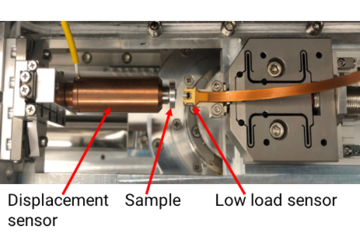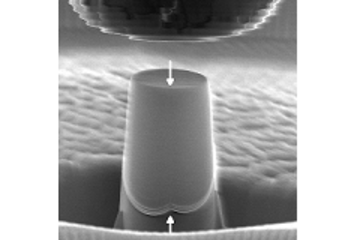All genres
21.
Journal Article
Effect of Heat Treatment Temperature on the Crystallization Behavior and Microstructural Evolution of Amorphous NbCo1.1Sn. ACS Applied Materials and Interfaces 15 (39), pp. 46064 - 46073 (2023)
22.
Journal Article
Decorated dislocations lead to dynamically optimized thermoelectric performance in N-type PbTe. Materials Today Physics 37, 101198 (2023)
23.
Journal Article
Strengthening model development and effects of low diffusing solutes to coarsening resistance in aluminum alloys. Materials Today Communications 36, 106636 (2023)
24.
Journal Article
Atom probe analysis of BaTiO3 enabled by metallic shielding. Scripta Materialia 229, 115370 (2023)
25.
Journal Article
Revealing Compositional Evolution of PdAu Electrocatalyst by Atom Probe Tomography. ACS Energy Letters 8 (6), pp. 2824 - 2830 (2023)
26.
Journal Article
Grain Boundary Phases in NbFeSb Half-Heusler Alloys: A New Avenue to Tune Transport Properties of Thermoelectric Materials. Advanced Energy Materials 13 (13), 2204321 (2023)
27.
Journal Article
Exploring the Surface Segregation of Rh Dopants in PtNi Nanoparticles through Atom Probe Tomography Analysis. The Journal of Physical Chemistry C 127 (46), pp. 22721 - 22725 (2023)
28.
Journal Article
Near-Atomic-Scale Evolution of the Surface Chemistry in Li[Ni,Mn,Co]O2 Cathode for Li-Ion Batteries Stored in Air. Advanced Energy and Sustainability Research 4 (1), 2200121 (2023)
29.
Journal Article
Facilitating the Systematic Nanoscale Study of Battery Materials by Atom Probe Tomography through in-situ Metal Coating. Batteries & Supercaps 7 (2), e202300403 (2023)
30.
Journal Article
Directed energy deposition of γ/γ' Co–Al–W superalloys. Additive Manufacturing 60, 103287 (2022)
31.
Journal Article
Tracking the Mn Diffusion in the Carbon-Supported Nanoparticles Through the Collaborative Analysis of Atom Probe and Evaporation Simulation. Microscopy and Microanalysis 28 (6), pp. 1841 - 1850 (2022)
32.
Journal Article
Atom probe analysis of electrode materials for Li-ion batteries: challenges and ways forward. Journal of Materials Chemistry A 10, pp. 4926 - 4935 (2022)
33.
Talk
Using in-situ metallic coating to overcome challenges in analyzing poorly conductive and brittle fragile samples by atom probe tomography. 5th European APT Workshop, Marseille, France (2025)
34.
Talk
Atom Probe Tomography - a new approach to provide new insights into the interfacial reaction at the liquid-solid interface on the atomic scale. Institute Seminar FAU Erlangen-Nuremberg, Department of Materials Science, Erlangen-Nuremberg, Germany (2025)
35.
Talk
Atom probe tomography – a new technique to understand biominerals/materials on the atomic scale. 8th BioMAT 2025 - Symposium on Biomaterials and Related Areas, Weimar, Germany (2025)
36.
Talk
New insights into thermoelectric materials through length-bridging characterization. Transverse Effects in Thermoelectric Systems 819. WE-Heraeus-Seminar, Bad Honnef, Germany (2024)
37.
Talk
In situ STEM observation of thermoelectric materials under heating and biasing conditions. The 6th joint Sino-German workshop on advanced & correlative electron microscopy of catalysts, quantum phenomena & soft matter, Bad Honnef, Germany (2024)
38.
Talk
In situ microstructural observation and electrical transport measurements of PbTe thermoelectrics by transmission electron microscopy. International Conference on Thermoelectrics ICT, Krakow, Poland (2024)
39.
Talk
Grain boundary-controlled lithiation of Li-solid solution systems for lithium metal batteries. International Operando Battery Days, Grenoble, France (2024)
40.
Talk
Influence of the Structure and Chemistry of Σ5 Grain Boundaries on Microscale Strengthening in Cu Bicrystals. TMS Annual Meeting and Exhibition 2024, Orlando, FL, USA (2024)











